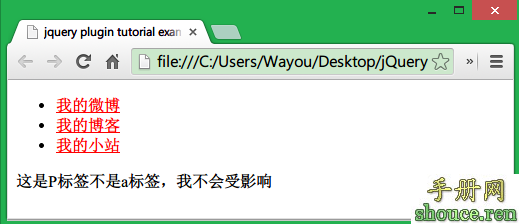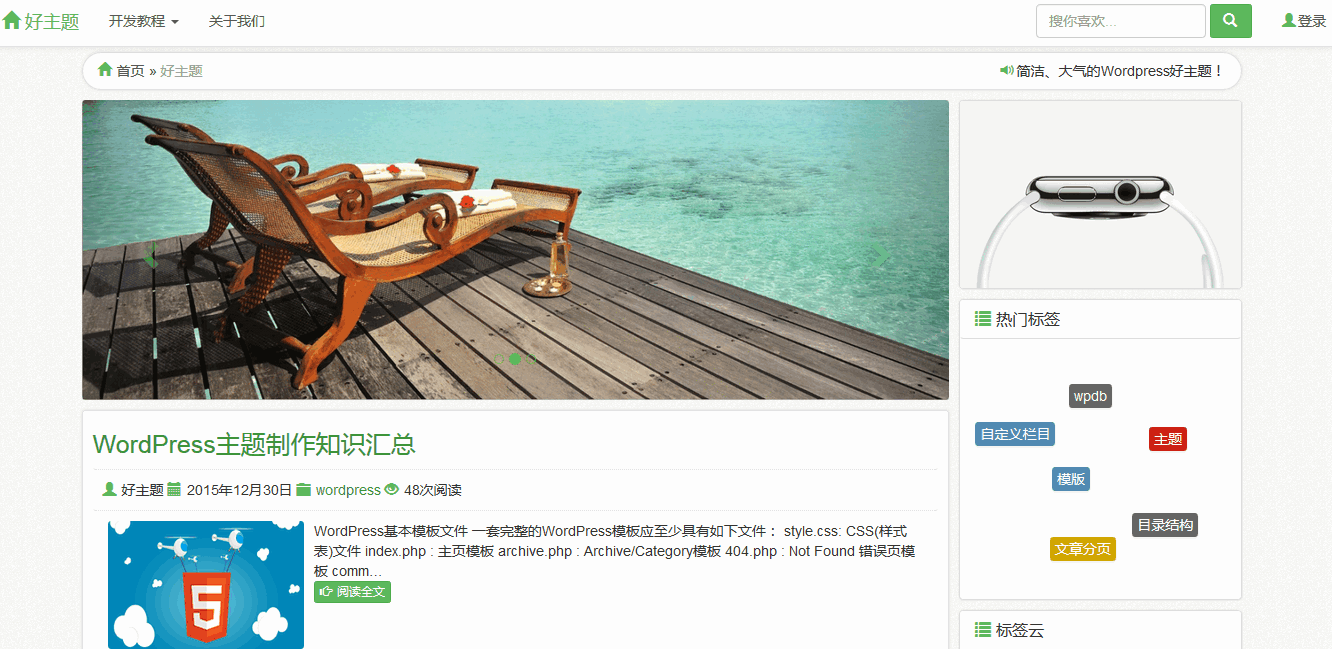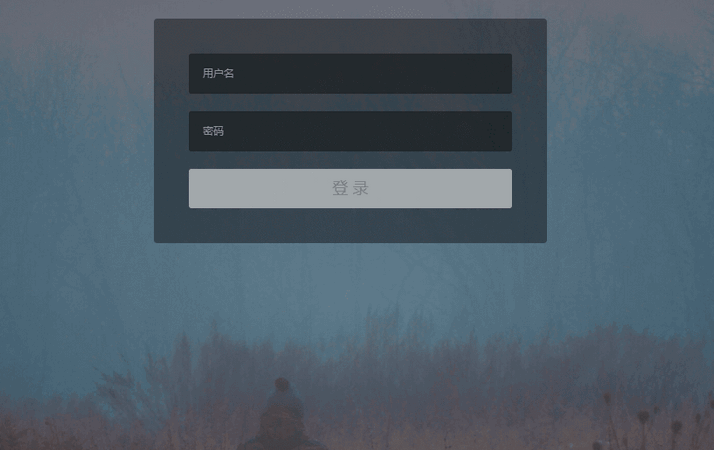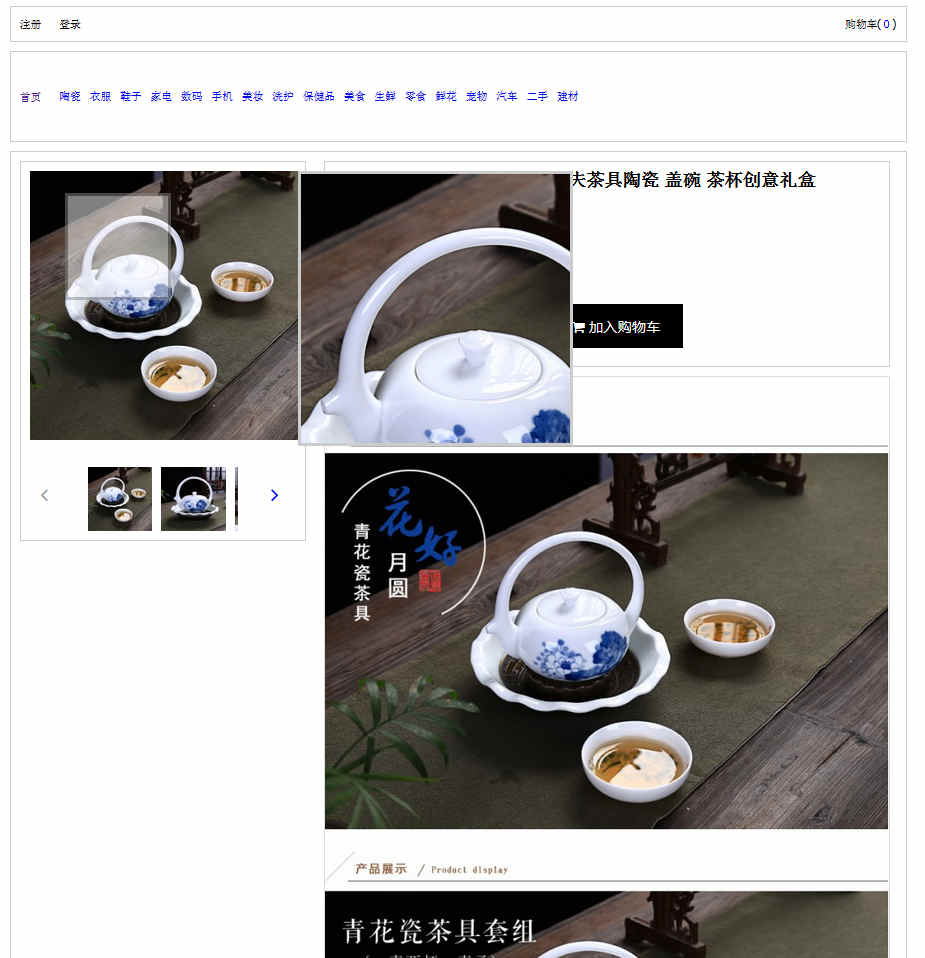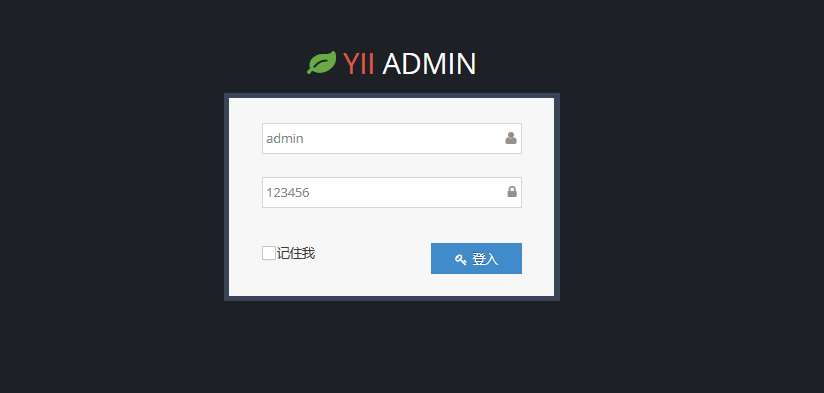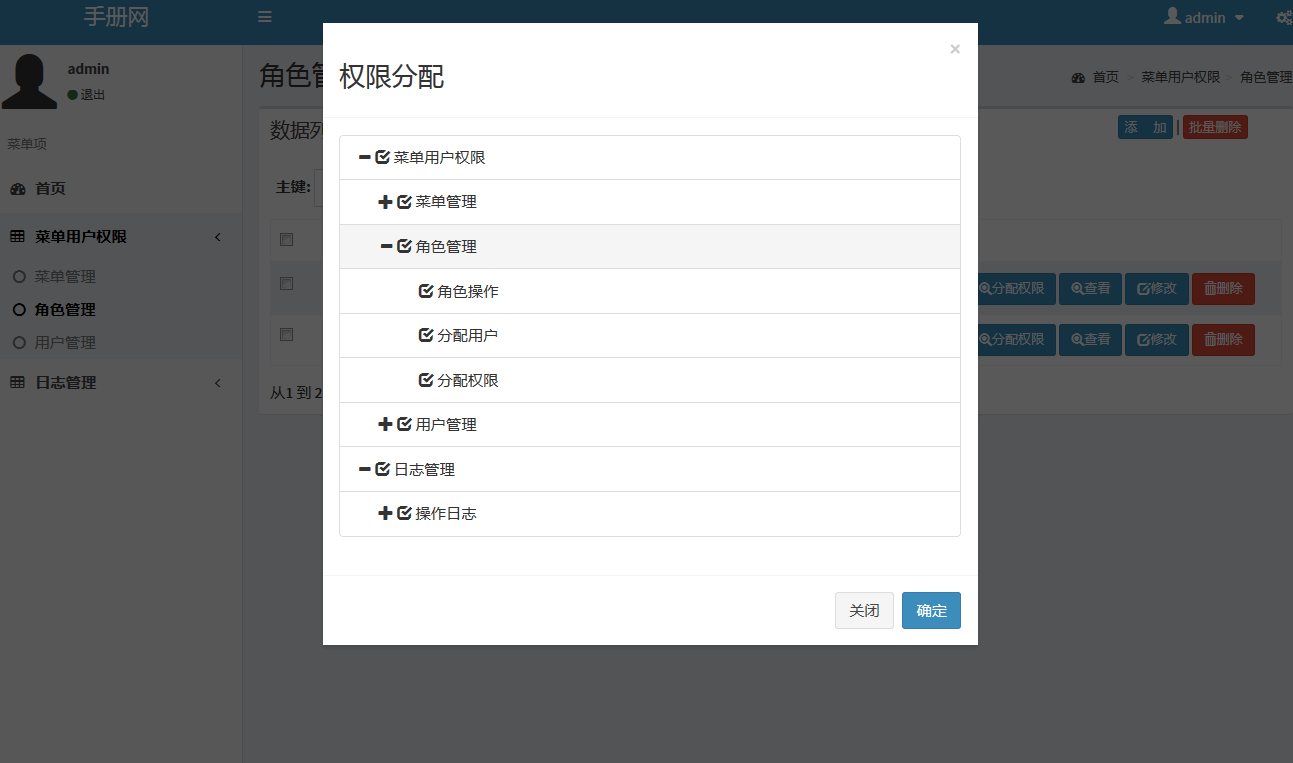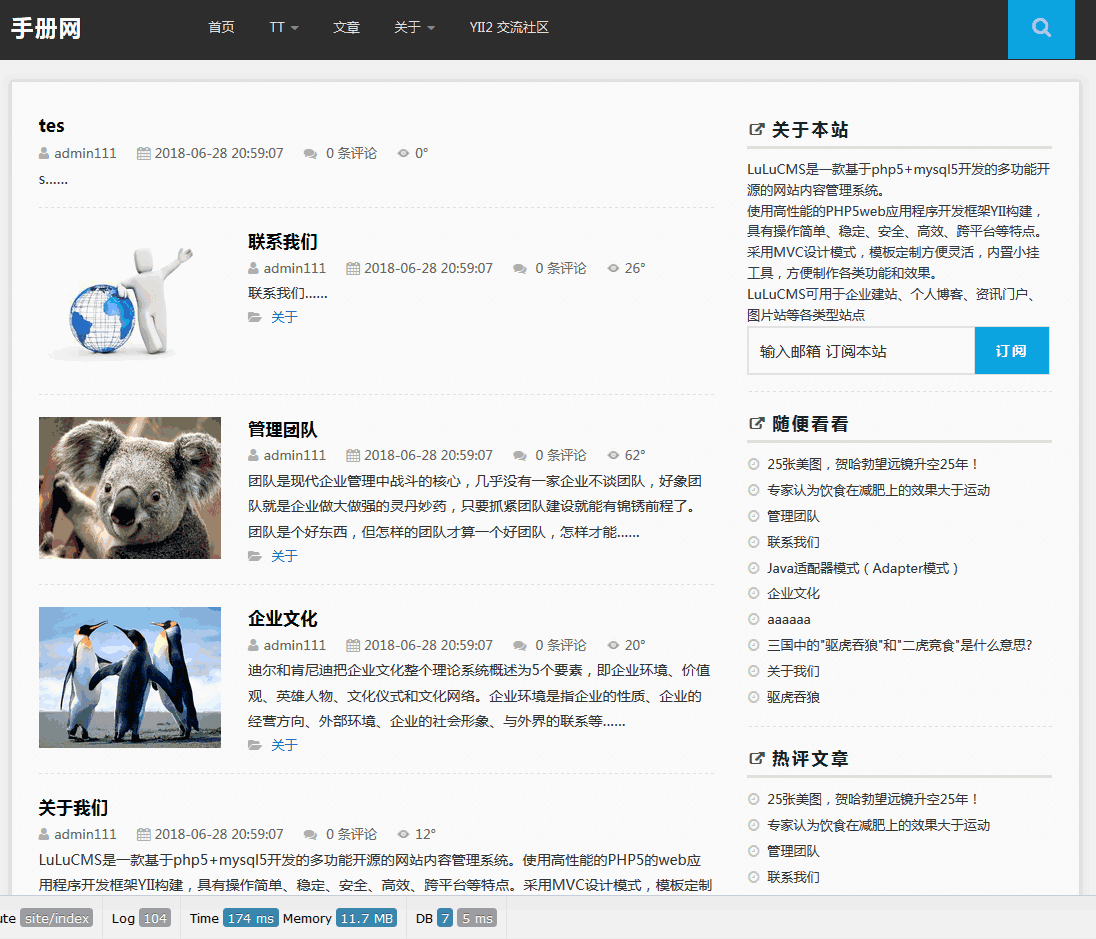iOS开发-自定义UIAlterView(iOS 7)
十度 IOS 2015年12月01日
收藏
App中不可能少了弹框,弹框是交互的必要形式,使用起来也非常简单,不过最近需要自定义一个弹框,虽然iOS本身的弹框已经能满足大部分的需求,但是不可避免还是需要做一些自定义的工作。iOS7之前是可以自定义AlterView的,就是继承一下UIAlterView,然后初始化的时候通过addSubview添加自定义的View,但是iOS7之后这样做就不行了,不过还好有开源项目可以解决这个问题。
iOS默认弹框
viewDidLoad中添加两个按钮,代码如下:
- UIButton *orignalBtn=[[UIButton alloc]initWithFrame:CGRectMake(100, 40, 100, 50)];
- [orignalBtn setBackgroundColor:[UIColor greenColor]];
- [orignalBtn setTitle:@"iOS弹框" forState:UIControlStateNormal];
- [orignalBtn addTarget:self action:@selector(orignalShow) forControlEvents:UIControlEventTouchUpInside];
- [self.view addSubview:orignalBtn];
- UIButton *customlBtn=[[UIButton alloc]initWithFrame:CGRectMake(100, 140, 100, 50)];
- [customlBtn setBackgroundColor:[UIColor redColor]];
- [customlBtn setTitle:@"自定义弹框" forState:UIControlStateNormal];
- [customlBtn addTarget:self action:@selector(customShow) forControlEvents:UIControlEventTouchUpInside];
- [self.view addSubview:customlBtn];
响应默认弹框事件:
- -(void)orignalShow{
- UIAlertView *alterView=[[UIAlertView alloc]initWithTitle:@"提示" message:@"博客园-Fly_Elephant" delegate:self cancelButtonTitle:@"取消" otherButtonTitles:@"确定", nil];
- [alterView show];
- }
效果如下:

自定义弹框
主要解决iOS7之后的系统无法自定义弹框的问题,使用开源项目,项目地址:https://github.com/wimagguc/ios-custom-alertview,其实就是自定义了一个类:
CustomIOSAlertView.h
- #import <UIKit/UIKit.h>
- @protocol CustomIOSAlertViewDelegate
- - (void)customIOS7dialogButtonTouchUpInside:(id)alertView clickedButtonAtIndex:(NSInteger)buttonIndex;
- @end
- @interface CustomIOSAlertView : UIView<CustomIOSAlertViewDelegate>
- @property (nonatomic, retain) UIView *parentView; // The parent view this 'dialog' is attached to
- @property (nonatomic, retain) UIView *dialogView; // Dialog's container view
- @property (nonatomic, retain) UIView *containerView; // Container within the dialog (place your ui elements here)
- @property (nonatomic, assign) id<CustomIOSAlertViewDelegate> delegate;
- @property (nonatomic, retain) NSArray *buttonTitles;
- @property (nonatomic, assign) BOOL useMotionEffects;
- @property (copy) void (^onButtonTouchUpInside)(CustomIOSAlertView *alertView, int buttonIndex) ;
- - (id)init;
- /*!
- DEPRECATED: Use the [CustomIOSAlertView init] method without passing a parent view.
- */
- - (id)initWithParentView: (UIView *)_parentView __attribute__ ((deprecated));
- - (void)show;
- - (void)close;
- - (IBAction)customIOS7dialogButtonTouchUpInside:(id)sender;
- - (void)setOnButtonTouchUpInside:(void (^)(CustomIOSAlertView *alertView, int buttonIndex))onButtonTouchUpInside;
- - (void)deviceOrientationDidChange: (NSNotification *)notification;
- - (void)dealloc;
- @end
CustomIOSAlertView.m
- #import "CustomIOSAlertView.h"
- #import <QuartzCore/QuartzCore.h>
- const static CGFloat kCustomIOSAlertViewDefaultButtonHeight = 50;
- const static CGFloat kCustomIOSAlertViewDefaultButtonSpacerHeight = 1;
- const static CGFloat kCustomIOSAlertViewCornerRadius = 7;
- const static CGFloat kCustomIOS7MotionEffectExtent = 10.0;
- @implementation CustomIOSAlertView
- CGFloat buttonHeight = 0;
- CGFloat buttonSpacerHeight = 0;
- @synthesize parentView, containerView, dialogView, onButtonTouchUpInside;
- @synthesize delegate;
- @synthesize buttonTitles;
- @synthesize useMotionEffects;
- - (id)initWithParentView: (UIView *)_parentView
- {
- self = [self init];
- if (_parentView) {
- self.frame = _parentView.frame;
- self.parentView = _parentView;
- }
- return self;
- }
- - (id)init
- {
- self = [super init];
- if (self) {
- self.frame = CGRectMake(0, 0, [UIScreen mainScreen].bounds.size.width, [UIScreen mainScreen].bounds.size.height);
- delegate = self;
- useMotionEffects = false;
- buttonTitles = @[@"Close"];
- [[UIDevice currentDevice] beginGeneratingDeviceOrientationNotifications];
- [[NSNotificationCenter defaultCenter] addObserver:self selector:@selector(deviceOrientationDidChange:) name:UIDeviceOrientationDidChangeNotification object:nil];
- [[NSNotificationCenter defaultCenter] addObserver:self selector:@selector(keyboardWillShow:) name:UIKeyboardWillShowNotification object:nil];
- [[NSNotificationCenter defaultCenter] addObserver:self selector:@selector(keyboardWillHide:) name:UIKeyboardWillHideNotification object:nil];
- }
- return self;
- }
- // Create the dialog view, and animate opening the dialog
- - (void)show
- {
- dialogView = [self createContainerView];
- dialogView.layer.shouldRasterize = YES;
- dialogView.layer.rasterizationScale = [[UIScreen mainScreen] scale];
- self.layer.shouldRasterize = YES;
- self.layer.rasterizationScale = [[UIScreen mainScreen] scale];
- #if (defined(__IPHONE_7_0))
- if (useMotionEffects) {
- [self applyMotionEffects];
- }
- #endif
- self.backgroundColor = [UIColor colorWithRed:0 green:0 blue:0 alpha:0];
- [self addSubview:dialogView];
- // Can be attached to a view or to the top most window
- // Attached to a view:
- if (parentView != NULL) {
- [parentView addSubview:self];
- // Attached to the top most window
- } else {
- // On iOS7, calculate with orientation
- if (floor(NSFoundationVersionNumber) <= NSFoundationVersionNumber_iOS_7_1) {
- UIInterfaceOrientation interfaceOrientation = [[UIApplication sharedApplication] statusBarOrientation];
- switch (interfaceOrientation) {
- case UIInterfaceOrientationLandscapeLeft:
- self.transform = CGAffineTransformMakeRotation(M_PI * 270.0 / 180.0);
- break;
- case UIInterfaceOrientationLandscapeRight:
- self.transform = CGAffineTransformMakeRotation(M_PI * 90.0 / 180.0);
- break;
- case UIInterfaceOrientationPortraitUpsideDown:
- self.transform = CGAffineTransformMakeRotation(M_PI * 180.0 / 180.0);
- break;
- default:
- break;
- }
- [self setFrame:CGRectMake(0, 0, self.frame.size.width, self.frame.size.height)];
- // On iOS8, just place the dialog in the middle
- } else {
- CGSize screenSize = [self countScreenSize];
- CGSize dialogSize = [self countDialogSize];
- CGSize keyboardSize = CGSizeMake(0, 0);
- dialogView.frame = CGRectMake((screenSize.width - dialogSize.width) / 2, (screenSize.height - keyboardSize.height - dialogSize.height) / 2, dialogSize.width, dialogSize.height);
- }
- [[[[UIApplication sharedApplication] windows] firstObject] addSubview:self];
- }
- dialogView.layer.opacity = 0.5f;
- dialogView.layer.transform = CATransform3DMakeScale(1.3f, 1.3f, 1.0);
- [UIView animateWithDuration:0.2f delay:0.0 options:UIViewAnimationOptionCurveEaseInOut
- animations:^{
- self.backgroundColor = [UIColor colorWithRed:0 green:0 blue:0 alpha:0.4f];
- dialogView.layer.opacity = 1.0f;
- dialogView.layer.transform = CATransform3DMakeScale(1, 1, 1);
- }
- completion:NULL
- ];
- }
- // Button has been touched
- - (IBAction)customIOS7dialogButtonTouchUpInside:(id)sender
- {
- if (delegate != NULL) {
- [delegate customIOS7dialogButtonTouchUpInside:self clickedButtonAtIndex:[sender tag]];
- }
- if (onButtonTouchUpInside != NULL) {
- onButtonTouchUpInside(self, (int)[sender tag]);
- }
- }
- // Default button behaviour
- - (void)customIOS7dialogButtonTouchUpInside: (CustomIOSAlertView *)alertView clickedButtonAtIndex:(NSInteger)buttonIndex
- {
- NSLog(@"Button Clicked! %d, %d", (int)buttonIndex, (int)[alertView tag]);
- [self close];
- }
- // Dialog close animation then cleaning and removing the view from the parent
- - (void)close
- {
- CATransform3D currentTransform = dialogView.layer.transform;
- if (floor(NSFoundationVersionNumber) <= NSFoundationVersionNumber_iOS_7_1) {
- CGFloat startRotation = [[dialogView valueForKeyPath:@"layer.transform.rotation.z"] floatValue];
- CATransform3D rotation = CATransform3DMakeRotation(-startRotation + M_PI * 270.0 / 180.0, 0.0f, 0.0f, 0.0f);
- dialogView.layer.transform = CATransform3DConcat(rotation, CATransform3DMakeScale(1, 1, 1));
- }
- dialogView.layer.opacity = 1.0f;
- [UIView animateWithDuration:0.2f delay:0.0 options:UIViewAnimationOptionTransitionNone
- animations:^{
- self.backgroundColor = [UIColor colorWithRed:0.0f green:0.0f blue:0.0f alpha:0.0f];
- dialogView.layer.transform = CATransform3DConcat(currentTransform, CATransform3DMakeScale(0.6f, 0.6f, 1.0));
- dialogView.layer.opacity = 0.0f;
- }
- completion:^(BOOL finished) {
- for (UIView *v in [self subviews]) {
- [v removeFromSuperview];
- }
- [self removeFromSuperview];
- }
- ];
- }
- - (void)setSubView: (UIView *)subView
- {
- containerView = subView;
- }
- // Creates the container view here: create the dialog, then add the custom content and buttons
- - (UIView *)createContainerView
- {
- if (containerView == NULL) {
- containerView = [[UIView alloc] initWithFrame:CGRectMake(0, 0, 300, 150)];
- }
- CGSize screenSize = [self countScreenSize];
- CGSize dialogSize = [self countDialogSize];
- // For the black background
- [self setFrame:CGRectMake(0, 0, screenSize.width, screenSize.height)];
- // This is the dialog's container; we attach the custom content and the buttons to this one
- UIView *dialogContainer = [[UIView alloc] initWithFrame:CGRectMake((screenSize.width - dialogSize.width) / 2, (screenSize.height - dialogSize.height) / 2, dialogSize.width, dialogSize.height)];
- // First, we style the dialog to match the iOS7 UIAlertView >>>
- CAGradientLayer *gradient = [CAGradientLayer layer];
- gradient.frame = dialogContainer.bounds;
- gradient.colors = [NSArray arrayWithObjects:
- (id)[[UIColor colorWithRed:218.0/255.0 green:218.0/255.0 blue:218.0/255.0 alpha:1.0f] CGColor],
- (id)[[UIColor colorWithRed:233.0/255.0 green:233.0/255.0 blue:233.0/255.0 alpha:1.0f] CGColor],
- (id)[[UIColor colorWithRed:218.0/255.0 green:218.0/255.0 blue:218.0/255.0 alpha:1.0f] CGColor],
- nil];
- CGFloat cornerRadius = kCustomIOSAlertViewCornerRadius;
- gradient.cornerRadius = cornerRadius;
- [dialogContainer.layer insertSublayer:gradient atIndex:0];
- dialogContainer.layer.cornerRadius = cornerRadius;
- dialogContainer.layer.borderColor = [[UIColor colorWithRed:198.0/255.0 green:198.0/255.0 blue:198.0/255.0 alpha:1.0f] CGColor];
- dialogContainer.layer.borderWidth = 1;
- dialogContainer.layer.shadowRadius = cornerRadius + 5;
- dialogContainer.layer.shadowOpacity = 0.1f;
- dialogContainer.layer.shadowOffset = CGSizeMake(0 - (cornerRadius+5)/2, 0 - (cornerRadius+5)/2);
- dialogContainer.layer.shadowColor = [UIColor blackColor].CGColor;
- dialogContainer.layer.shadowPath = [UIBezierPath bezierPathWithRoundedRect:dialogContainer.bounds cornerRadius:dialogContainer.layer.cornerRadius].CGPath;
- // There is a line above the button
- UIView *lineView = [[UIView alloc] initWithFrame:CGRectMake(0, dialogContainer.bounds.size.height - buttonHeight - buttonSpacerHeight, dialogContainer.bounds.size.width, buttonSpacerHeight)];
- lineView.backgroundColor = [UIColor colorWithRed:198.0/255.0 green:198.0/255.0 blue:198.0/255.0 alpha:1.0f];
- [dialogContainer addSubview:lineView];
- // ^^^
- // Add the custom container if there is any
- [dialogContainer addSubview:containerView];
- // Add the buttons too
- [self addButtonsToView:dialogContainer];
- return dialogContainer;
- }
- // Helper function: add buttons to container
- - (void)addButtonsToView: (UIView *)container
- {
- if (buttonTitles==NULL) { return; }
- CGFloat buttonWidth = container.bounds.size.width / [buttonTitles count];
- for (int i=0; i<[buttonTitles count]; i++) {
- UIButton *closeButton = [UIButton buttonWithType:UIButtonTypeCustom];
- [closeButton setFrame:CGRectMake(i * buttonWidth, container.bounds.size.height - buttonHeight, buttonWidth, buttonHeight)];
- [closeButton addTarget:self action:@selector(customIOS7dialogButtonTouchUpInside:) forControlEvents:UIControlEventTouchUpInside];
- [closeButton setTag:i];
- [closeButton setTitle:[buttonTitles objectAtIndex:i] forState:UIControlStateNormal];
- [closeButton setTitleColor:[UIColor colorWithRed:0.0f green:0.5f blue:1.0f alpha:1.0f] forState:UIControlStateNormal];
- [closeButton setTitleColor:[UIColor colorWithRed:0.2f green:0.2f blue:0.2f alpha:0.5f] forState:UIControlStateHighlighted];
- [closeButton.titleLabel setFont:[UIFont boldSystemFontOfSize:14.0f]];
- [closeButton.layer setCornerRadius:kCustomIOSAlertViewCornerRadius];
- [container addSubview:closeButton];
- }
- }
- // Helper function: count and return the dialog's size
- - (CGSize)countDialogSize
- {
- CGFloat dialogWidth = containerView.frame.size.width;
- CGFloat dialogHeight = containerView.frame.size.height + buttonHeight + buttonSpacerHeight;
- return CGSizeMake(dialogWidth, dialogHeight);
- }
- // Helper function: count and return the screen's size
- - (CGSize)countScreenSize
- {
- if (buttonTitles!=NULL && [buttonTitles count] > 0) {
- buttonHeight = kCustomIOSAlertViewDefaultButtonHeight;
- buttonSpacerHeight = kCustomIOSAlertViewDefaultButtonSpacerHeight;
- } else {
- buttonHeight = 0;
- buttonSpacerHeight = 0;
- }
- CGFloat screenWidth = [UIScreen mainScreen].bounds.size.width;
- CGFloat screenHeight = [UIScreen mainScreen].bounds.size.height;
- // On iOS7, screen width and height doesn't automatically follow orientation
- if (floor(NSFoundationVersionNumber) <= NSFoundationVersionNumber_iOS_7_1) {
- UIInterfaceOrientation interfaceOrientation = [[UIApplication sharedApplication] statusBarOrientation];
- if (UIInterfaceOrientationIsLandscape(interfaceOrientation)) {
- CGFloat tmp = screenWidth;
- screenWidth = screenHeight;
- screenHeight = tmp;
- }
- }
- return CGSizeMake(screenWidth, screenHeight);
- }
- #if (defined(__IPHONE_7_0))
- // Add motion effects
- - (void)applyMotionEffects {
- if (floor(NSFoundationVersionNumber) <= NSFoundationVersionNumber_iOS_6_1) {
- return;
- }
- UIInterpolatingMotionEffect *horizontalEffect = [[UIInterpolatingMotionEffect alloc] initWithKeyPath:@"center.x"
- type:UIInterpolatingMotionEffectTypeTiltAlongHorizontalAxis];
- horizontalEffect.minimumRelativeValue = @(-kCustomIOS7MotionEffectExtent);
- horizontalEffect.maximumRelativeValue = @( kCustomIOS7MotionEffectExtent);
- UIInterpolatingMotionEffect *verticalEffect = [[UIInterpolatingMotionEffect alloc] initWithKeyPath:@"center.y"
- type:UIInterpolatingMotionEffectTypeTiltAlongVerticalAxis];
- verticalEffect.minimumRelativeValue = @(-kCustomIOS7MotionEffectExtent);
- verticalEffect.maximumRelativeValue = @( kCustomIOS7MotionEffectExtent);
- UIMotionEffectGroup *motionEffectGroup = [[UIMotionEffectGroup alloc] init];
- motionEffectGroup.motionEffects = @[horizontalEffect, verticalEffect];
- [dialogView addMotionEffect:motionEffectGroup];
- }
- #endif
- - (void)dealloc
- {
- [[UIDevice currentDevice] endGeneratingDeviceOrientationNotifications];
- [[NSNotificationCenter defaultCenter] removeObserver:self name:UIDeviceOrientationDidChangeNotification object:nil];
- [[NSNotificationCenter defaultCenter] removeObserver:self name:UIKeyboardWillHideNotification object:nil];
- [[NSNotificationCenter defaultCenter] removeObserver:self name:UIKeyboardWillShowNotification object:nil];
- }
- // Rotation changed, on iOS7
- - (void)changeOrientationForIOS7 {
- UIInterfaceOrientation interfaceOrientation = [[UIApplication sharedApplication] statusBarOrientation];
- CGFloat startRotation = [[self valueForKeyPath:@"layer.transform.rotation.z"] floatValue];
- CGAffineTransform rotation;
- switch (interfaceOrientation) {
- case UIInterfaceOrientationLandscapeLeft:
- rotation = CGAffineTransformMakeRotation(-startRotation + M_PI * 270.0 / 180.0);
- break;
- case UIInterfaceOrientationLandscapeRight:
- rotation = CGAffineTransformMakeRotation(-startRotation + M_PI * 90.0 / 180.0);
- break;
- case UIInterfaceOrientationPortraitUpsideDown:
- rotation = CGAffineTransformMakeRotation(-startRotation + M_PI * 180.0 / 180.0);
- break;
- default:
- rotation = CGAffineTransformMakeRotation(-startRotation + 0.0);
- break;
- }
- [UIView animateWithDuration:0.2f delay:0.0 options:UIViewAnimationOptionTransitionNone
- animations:^{
- dialogView.transform = rotation;
- }
- completion:nil
- ];
- }
- // Rotation changed, on iOS8
- - (void)changeOrientationForIOS8: (NSNotification *)notification {
- CGFloat screenWidth = [UIScreen mainScreen].bounds.size.width;
- CGFloat screenHeight = [UIScreen mainScreen].bounds.size.height;
- [UIView animateWithDuration:0.2f delay:0.0 options:UIViewAnimationOptionTransitionNone
- animations:^{
- CGSize dialogSize = [self countDialogSize];
- CGSize keyboardSize = [[[notification userInfo] objectForKey:UIKeyboardFrameBeginUserInfoKey] CGRectValue].size;
- self.frame = CGRectMake(0, 0, screenWidth, screenHeight);
- dialogView.frame = CGRectMake((screenWidth - dialogSize.width) / 2, (screenHeight - keyboardSize.height - dialogSize.height) / 2, dialogSize.width, dialogSize.height);
- }
- completion:nil
- ];
- }
- // Handle device orientation changes
- - (void)deviceOrientationDidChange: (NSNotification *)notification
- {
- // If dialog is attached to the parent view, it probably wants to handle the orientation change itself
- if (parentView != NULL) {
- return;
- }
- if (floor(NSFoundationVersionNumber) <= NSFoundationVersionNumber_iOS_7_1) {
- [self changeOrientationForIOS7];
- } else {
- [self changeOrientationForIOS8:notification];
- }
- }
- // Handle keyboard show/hide changes
- - (void)keyboardWillShow: (NSNotification *)notification
- {
- CGSize screenSize = [self countScreenSize];
- CGSize dialogSize = [self countDialogSize];
- CGSize keyboardSize = [[[notification userInfo] objectForKey:UIKeyboardFrameBeginUserInfoKey] CGRectValue].size;
- UIInterfaceOrientation interfaceOrientation = [[UIApplication sharedApplication] statusBarOrientation];
- if (UIInterfaceOrientationIsLandscape(interfaceOrientation)) {
- CGFloat tmp = keyboardSize.height;
- keyboardSize.height = keyboardSize.width;
- keyboardSize.width = tmp;
- }
- [UIView animateWithDuration:0.2f delay:0.0 options:UIViewAnimationOptionTransitionNone
- animations:^{
- dialogView.frame = CGRectMake((screenSize.width - dialogSize.width) / 2, (screenSize.height - keyboardSize.height - dialogSize.height) / 2, dialogSize.width, dialogSize.height);
- }
- completion:nil
- ];
- }
- - (void)keyboardWillHide: (NSNotification *)notification
- {
- CGSize screenSize = [self countScreenSize];
- CGSize dialogSize = [self countDialogSize];
- [UIView animateWithDuration:0.2f delay:0.0 options:UIViewAnimationOptionTransitionNone
- animations:^{
- dialogView.frame = CGRectMake((screenSize.width - dialogSize.width) / 2, (screenSize.height - dialogSize.height) / 2, dialogSize.width, dialogSize.height);
- }
- completion:nil
- ];
- }
- @end
调用代码:
- -(void)customShow{
- CustomIOSAlertView *alertView = [[CustomIOSAlertView alloc] init];
- [alertView setContainerView:[self customView]];
- [alertView setButtonTitles:[NSMutableArray arrayWithObjects:@"取消", @"确定", nil]];
- [alertView setDelegate:self];
- [alertView setOnButtonTouchUpInside:^(CustomIOSAlertView *alertView, int buttonIndex) {
- NSString *result=alertView.buttonTitles[buttonIndex];
- NSLog(@"点击了%@按钮",result);
- [alertView close];
- }];
- [alertView setUseMotionEffects:true];
- [alertView show];
- }
- - (UIView *)customView
- {
- UIView *customView = [[UIView alloc] initWithFrame:CGRectMake(0, 0, 240, 160)];
- UILabel *tip=[[UILabel alloc]initWithFrame:CGRectMake(100, 10, 50, 30)];
- [tip setText:@"提示"];
- [customView addSubview:tip];
- UILabel *content=[[UILabel alloc]initWithFrame:CGRectMake(10, 60, 210, 30)];
- [content setText:@"http://www.cnblogs.com/xiaofeixiang"];
- [content setFont:[UIFont systemFontOfSize:12]];
- [customView addSubview:content];
- return customView;
- }
效果如下:




